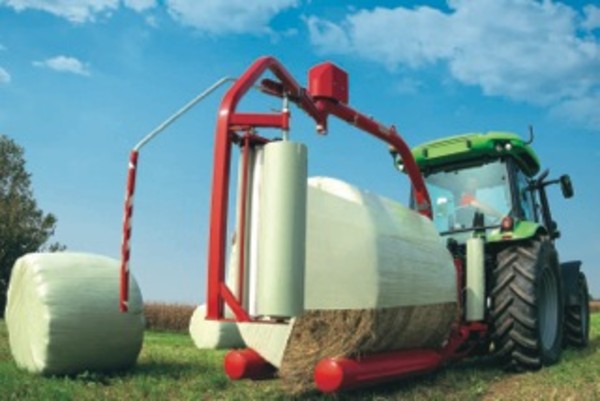
Wraps for forage baling: an eye on safety
Mechanical operations for wrapping bales involves risks for the worker. A new norm will provide a definition of the devices to be used for guaranteeing maximum safety in all the phases of this job as regards the risks of coming into contact with machinery parts in operation, the loss of stability and discharging bales to terrain
Wrapping bales of forage with plastic film is becoming a consolidated practice also in the Mediterranean latitudes after this method came to the fore in the Nordic countries. The main reasons farmers are selecting wrapping are for conserving the protein content of a product which is more appetizing for livestock, less variability in the physical and nutritional characteristics of the forage and less loss due to detached alfalfa leaves. Wrapping is done with specific machines called wrappers which can be integrated or combined with harvester balers or independent machinery. Wrappers integrated with harvester balers make up a single physical unit with parts which are not distinguished one from another, whereas combined machines are physically separated from the baler but are designed to be used with the baler. Independent wrappers can be hitched to a tractor for towing or stationary. Differences in the build of the machinery do not stop here. There are machines which wrap stationary bales and others which wrap bales while rotating them. Another important factor is the type of bale which can be wrapped. Cylindrical and prismatic bales obviously differ. Other than the middle phase of wrapping, what must be also considered are the phases of picking up the bale and returning it to the ground respectively for independent wrappers and all machines, including those integrated and combines. Thus, from this point of view, it is already evident that these are complicated machines equipped for various functions and one of the factors designers must take into account is safety. Wrappers are, in fact, included in Directive 2006/42/EC, the well known European Parliament and Council Directive which sets out essential safety requirements for all machinery. The amended Directive covers the general principles of specific technical issues associated with the machinery in question. Though the text deals with voluntary application, the norms are usually given preference by manufacturers. To date, however, there are no harmonized norms for wrappers. In 2016 this loophole will be closed with the publication of ISO EN ISO 4254-14, now close to its final draft. This standard defines the construction requirements for the machinery for avoiding a number of risks, including those associated with contact with the working parts of machinery, loss of stability and on to depositing the bale on terrain which is not level and the movements of the platform supporting the bale. These wrappers are usually machines which operate automatically which means that the operator is not required to continuously control its work. As a result, the operator can approach parts of the machine while it is running or starting up, through this is strictly forbidden in a reading of the instruction manual. In detail, the booms which stretch the film and apply it can be a source of danger; the state of the art machine is equipped with boom sensors which, when in operation, shut down the boom on contact. On stability, the standard establishes that following detection, the running parts must be stopped before reaching a point in which the sensor detects contact. Furthermore, the standard sets maximum power which can be transmitted by the sensor to anything coming into contact to it, meaning the body of the operator. The sensor must be equipped with protection or located in a position where it avoids access to the part between the sensor and the boom applying the film. For the stability of the machine, this must be verified by a test on a 5° slope ahead of carrying out all the phases of operations, including loading and depositing the bales. As regards unloading them, the stability of the machine must be guaranteed and risks involving loss of control of the materials unloaded are taken into account. The standard thus specifies that the machine which performs automatic operational cycles must be equipped with a control for stopping the process if the operator is aware of conditions which are not correct. Moreover, the instruction manual must contain explanations on the way to position the bale in relation to the ground before dropping it. For machines equipped with a rotating bale platform, the standard will also specify the way the platform is set in motion and stopped for the purpose of avoiding an abrupt movement leading to accidentally dropping the bale off the platform to the ground.








